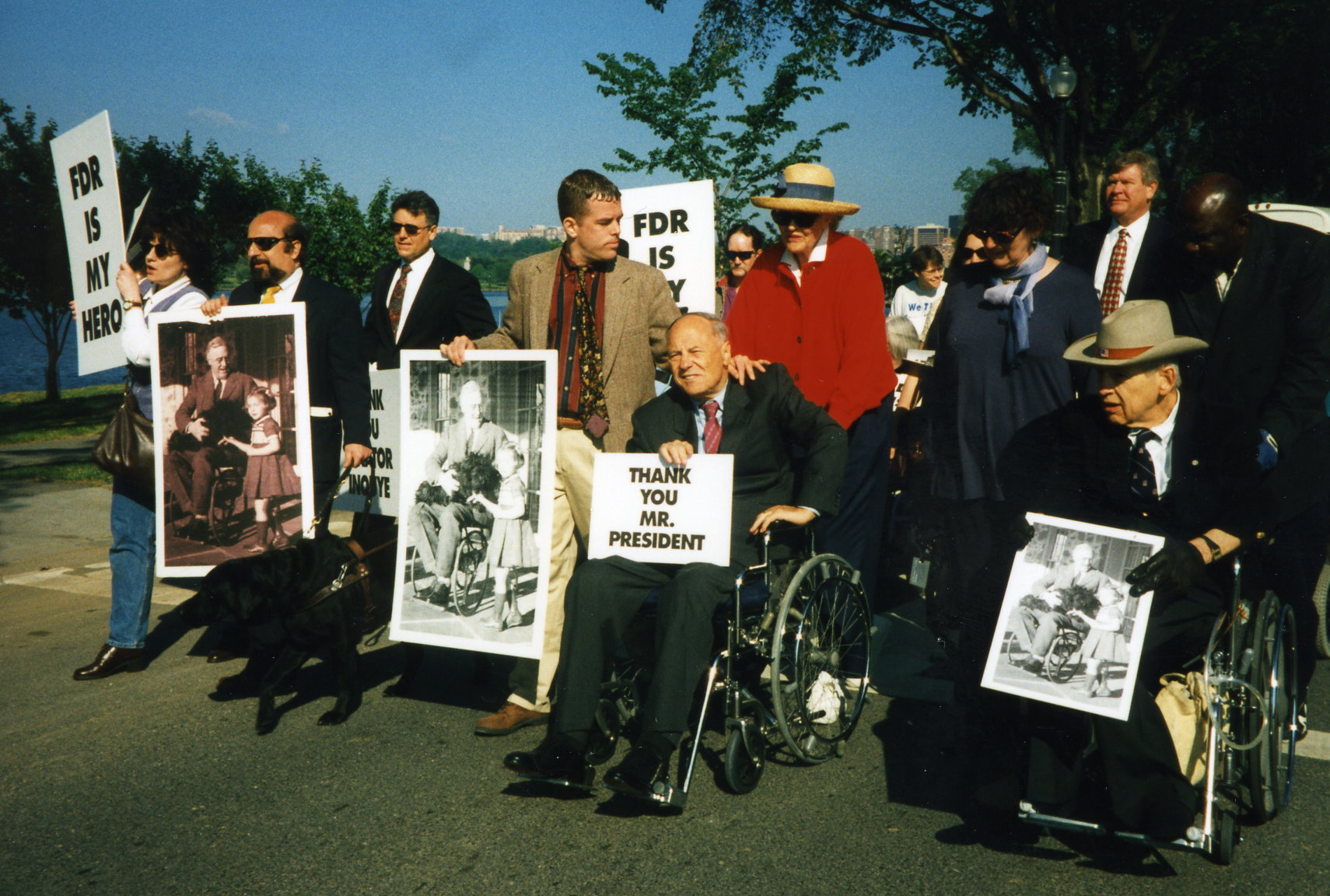Overview
 When the FDR Memorial was first dedicated in 1997, it did not include a depiction of FDR’s disability. The disability community, organized by the National Organization on Disability (NOD) under the leadership of Mike Deland, Alan Reich, and Jim Dickson, led the campaign which was eventually joined by over 50 disability organizations.
When the FDR Memorial was first dedicated in 1997, it did not include a depiction of FDR’s disability. The disability community, organized by the National Organization on Disability (NOD) under the leadership of Mike Deland, Alan Reich, and Jim Dickson, led the campaign which was eventually joined by over 50 disability organizations.
It was an epic battle for representation which resulted in the addition of a statue of FDR in a wheelchair to the Presidential Memorial. It was not an easy victory. It was not until 2001 when the statue was added with funding secured through efforts of the disabled community.
Many states are mandating diversity, equity, and inclusion studies in K-12 curricula. There are a growing number of states that have mandated the teaching of disability history or have moved to have a disability awareness week or month.
This workshop aligns with the NSCC C3 standards which focus on inquiry, key concepts, and preparation for a life of civic engagement including work and continued studies. (Retrieved 3/3/2022 from https://www.socialstudies.org/sites/default/files/c3/c3-framework-for-social-studies-rev0617.pdf)
While different states teach FDR, the New Deal, and WWII in different grades, civics education is found in all grades. Civics education is increasingly being added to the K-12 curriculum as a result of the civics education gap. (Retrieved 3/3/2022 from https://www.nea.org/advocating-for-change/new-from-nea/forgotten-purpose-civics-education-public-schools).
This workshop will illustrate through first-person narratives and collateral materials how disabled Americans engaged effectively in civil society to add the statue of FDR in a wheelchair to the Memorial. The skills needed to conduct the campaign are key to post-secondary school success for all - e.g. leadership development, conflict resolution, and self-advocacy. Teachers will be able to show examples of those skills through materials, voices, and authentic stories from the fight for the wheelchair statue and from FDR’s own experience with disability.
In addition, topics related to the FDR and Eleanor Roosevelt era that allows for intersectional teaching opportunities will also be explored such as the experience of African Americans and Japanese Americans during their era.







